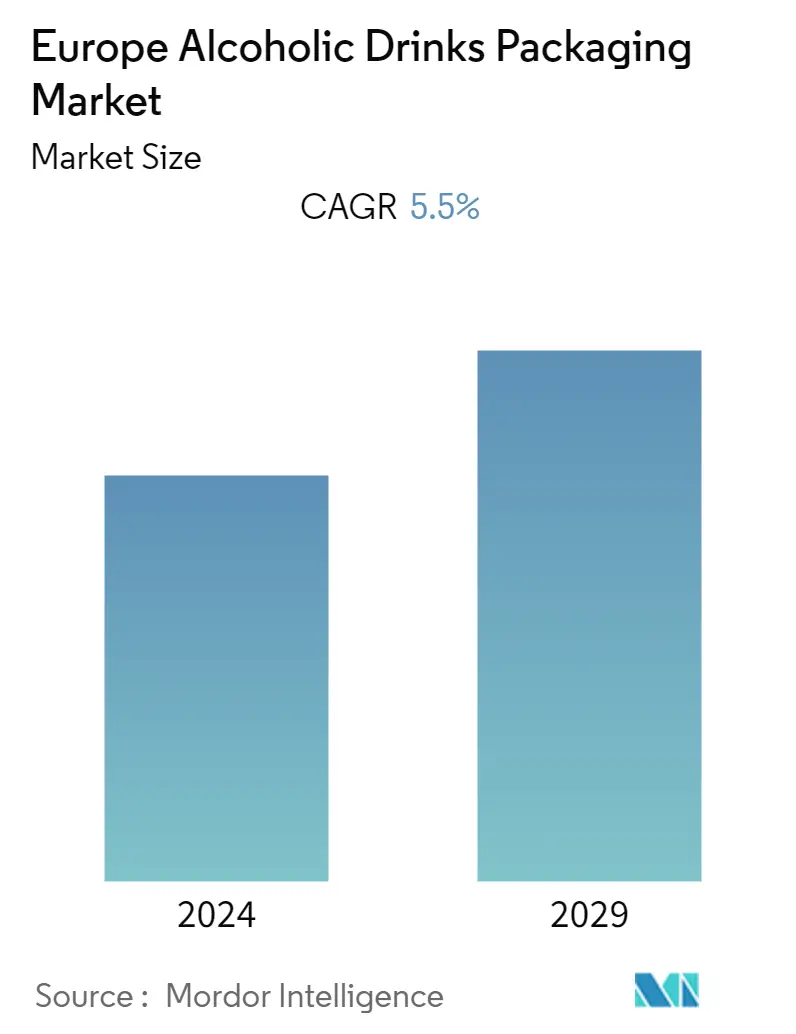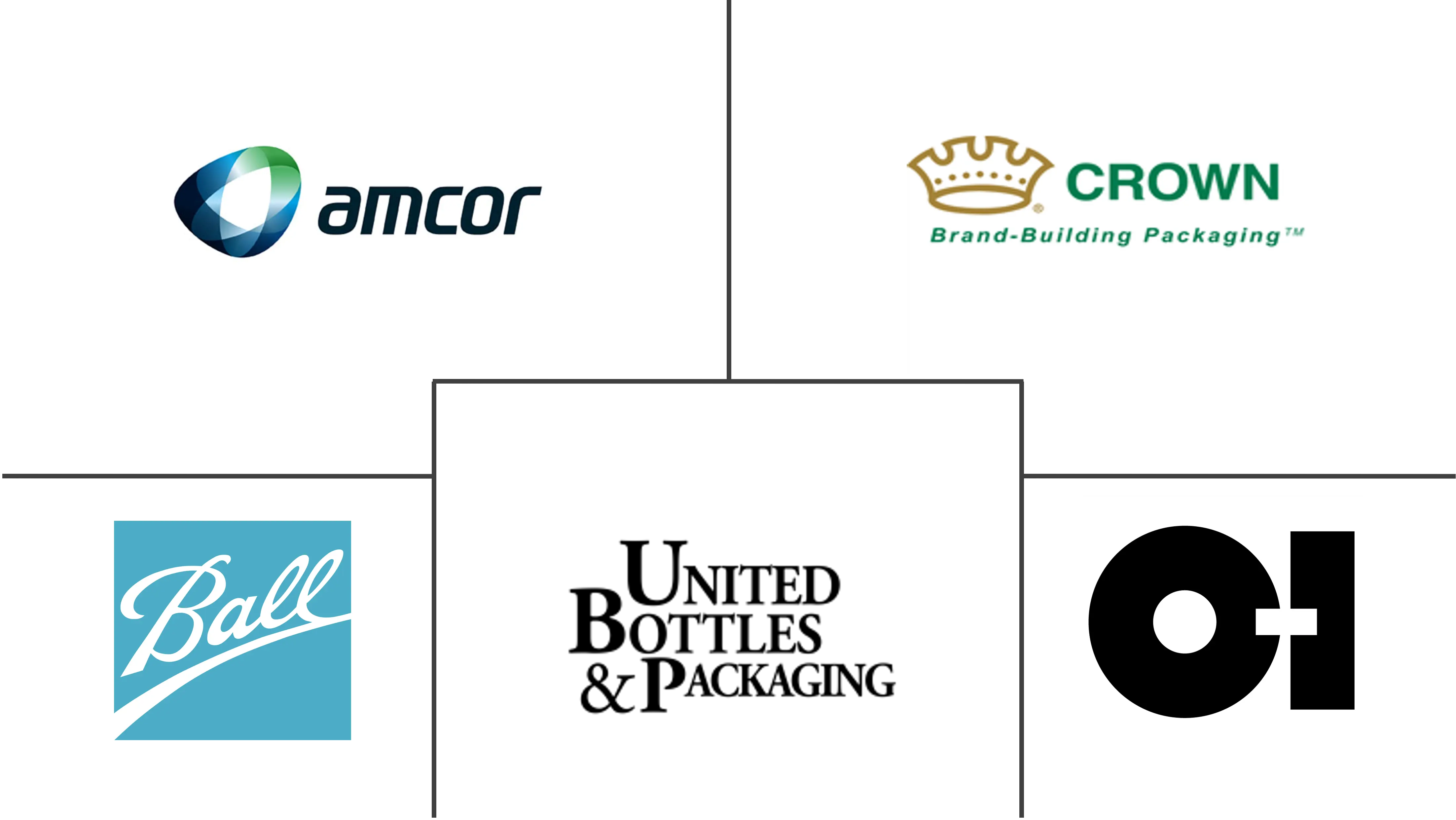Market Size of Europe Alcoholic Drinks Packaging Industry

| Study Period | 2019 - 2029 |
| Base Year For Estimation | 2023 |
| Forecast Data Period | 2024 - 2029 |
| Historical Data Period | 2019 - 2022 |
| CAGR | 5.50 % |
| Market Concentration | Medium |
Major Players
*Disclaimer: Major Players sorted in no particular order |
Need a report that reflects how COVID-19 has impacted this market and its growth?
Europe Alcoholic Drinks Packaging Market Analysis
The Europe alcoholic drinks packaging market is expected to record a CAGR of 5.5% during the forecast period. The packaging of alcoholic beverages plays a significant role in the brand promotion of alcoholic drinks. It helps brands to communicate with their consumers as they can touch and feel the product through packaging. Recent innovation such as lightweight glass and effective recycling is driving the market.
- The demand for alcoholic drinks is anticipated to rise in the United Kingdom, Italy, Germany, and Finland, which will help the packaging industry in Europe expand. Manufacturers of alcoholic beverage packaging in Europe benefit from the rising trend of alcohol use during social gatherings since it opens up new business prospects. In Europe, young consumers are becoming more accustomed to drinking beer and wine.
- Glass is a popular choice for packaging since it does not react with the chemicals in drinks and, as a result, protects the scent, strength, and flavor of these beverages. Packaging materials like glass are anticipated to be in high demand. As a result, glass bottles are used for packaging the majority of beer sales. Throughout the forecast, this tendency is anticipated to persist. Since glass packaging is entirely recyclable, it is a desirable packaging choice for sustainability.
- The increased acceptability of cans among young customers led to significant demand for aluminum can packaging from canned wine and beer producers. This tendency has been progressively pushed by a substantial cultural shift since millennials are enthusiastic consumers of various wine forms that provide convenience.
- Craft positioning is becoming more significant across alcoholic beverages as customers choose to drink less but better, pushing firms to use packaging to communicate their message. This may be seen in the increase in beverage packaging, such as metal beverage cans for beer and glass bottles with cork closures for alcohol.
- The COVID-19 epidemic did not affect total alcohol consumption; beer and wine sales increased while hard liquor sales decreased. Budget and mid-range spirits increased in demand, while high-end super-premium and ultra-premium spirits saw a decline in demand. There have been significant increases in the demand for wholesale wine and beer as people cut back on socializing and spend more time at home. Consumers are paying more for each bottle than before the epidemic.
